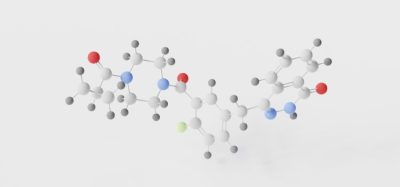Study reports rapid method for microbial contaminant detection
Posted: 13 October 2023 | Catherine Eckford (European Pharmaceutical Review) | No comments yet
Research using fluorescent optical respirometry (FOR) illustrated successful detection of aerobic bacteria three hours after setting samples.


A paper published in Pharmaceuticals has reported the first demonstration of the possibility of using fluorescent optical respirometry (FOR) to detect aerobic bacteria in selected sterile pharmaceutical products.
Rapid, real-time measurement of living aerobic microorganism cells was achieved using the fluorescent sensor tris-[(4,7-diphenyl-1,10 phenanthroline)ruthenium(II)] dichloride (Ru(DPP)3Cl2).
As reference methods, in the study, the researchers utilised the serial dilution method in broth and colony counts on agar plates.
It was shown that the minimum inhibitory concentration (MIC) values obtained by FOR were consistent with the results of the MIC determinations using serial dilutions. The effects of concentrations lower than the growth-inhibitory concentrations on microbial cells were also demonstrated, the paper reported.
Analysis of microbial growth in cultures using fluorescent optical respirometry
Study results
FOR significantly shortened the time of the studies from three days for bacteria and five days for yeasts to 10 hours and 15 hours, respectively, the authors noted.
Analysis of the inhibitory effect of dimethyl sulphoxide (DMSO) on the bacteria using the traditional method and FOR gave the same MIC values, according to Hałasa et al. FOR enabled the researchers to view the effect of concentrations below the MIC on bacterial cells. The authors specified that they were able to reduce the time of examinations, even to as low as four hours.
The paper stated that although the substance tested had complex compositions, the results illustrated that the composition of the product did not affect the florescence signal when using the FOR method.
Detecting contaminants in pharmaceutical drugs: method benefits
Shortening the time to obtain results with the fluorescent optical respirometry method also reduced the time to obtain results in the purity tests of the pharmaceutical preparations. Notably, this also speeds up the possibility of releasing the product to the market, the paper stated.
Importantly, the researchers stated they were the first to not only “elucidate the effect of concentrations lower than the growth-inhibitory concentrations (MIC) on microbial cells”, but to show the possibility of using the FOR method for researching Corynebacterium diphtheriae.
Hałasa et al. concluded: “using FOR the presence of aerobic microorganisms can be detected three hours after setting the samples, while the Ph. Eur. guidelines recommend reading the results after five days. Once again, we showed that our method, with its objectivity of determinations, significantly shortens the time to obtain results. Reducing the time needed for microorganism detection and the objectivity of the method will shorten the time needed for the detection of possible biological contaminants in sterile drugs.”
The research paper referenced is an extended version of a paper published in the 8th International Electronic Conference on Medicinal Chemistry (1-30 November 2022).









